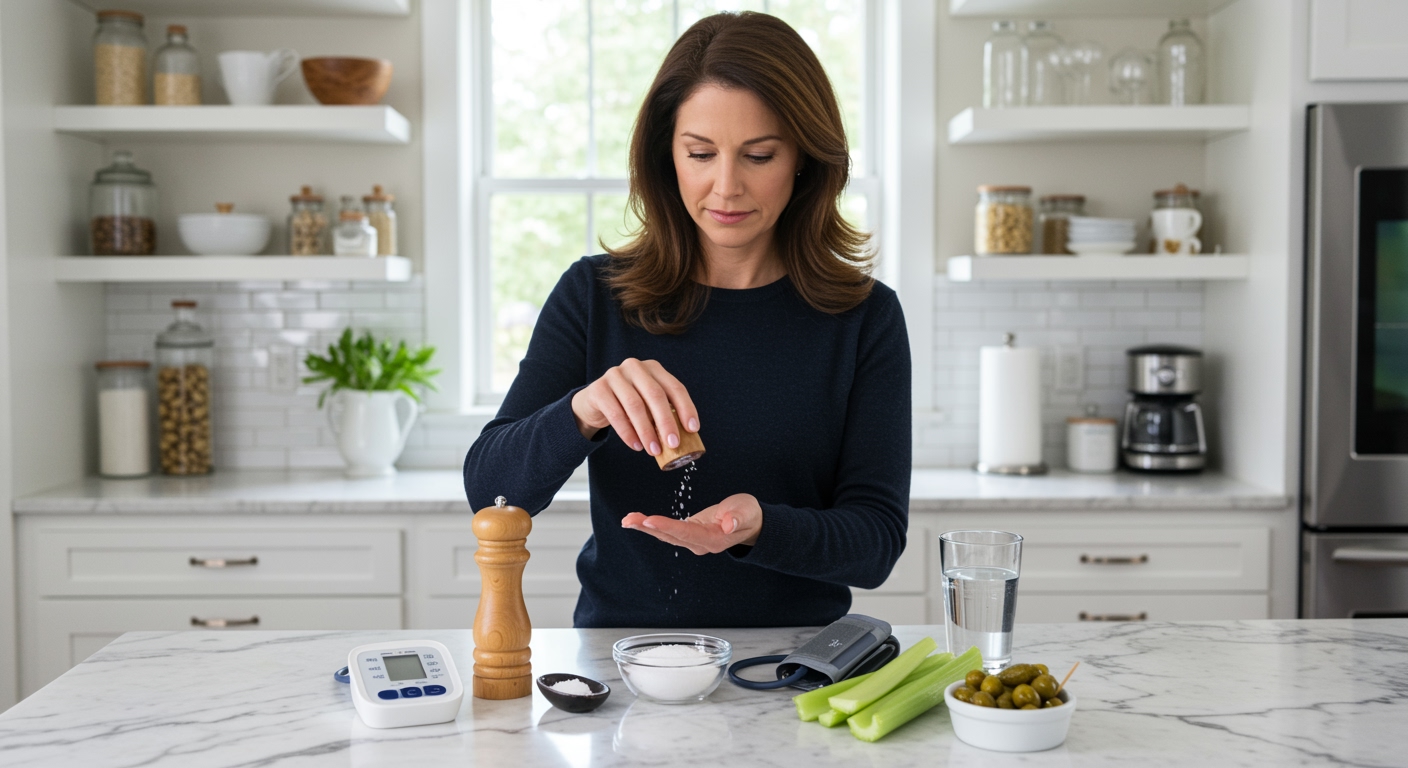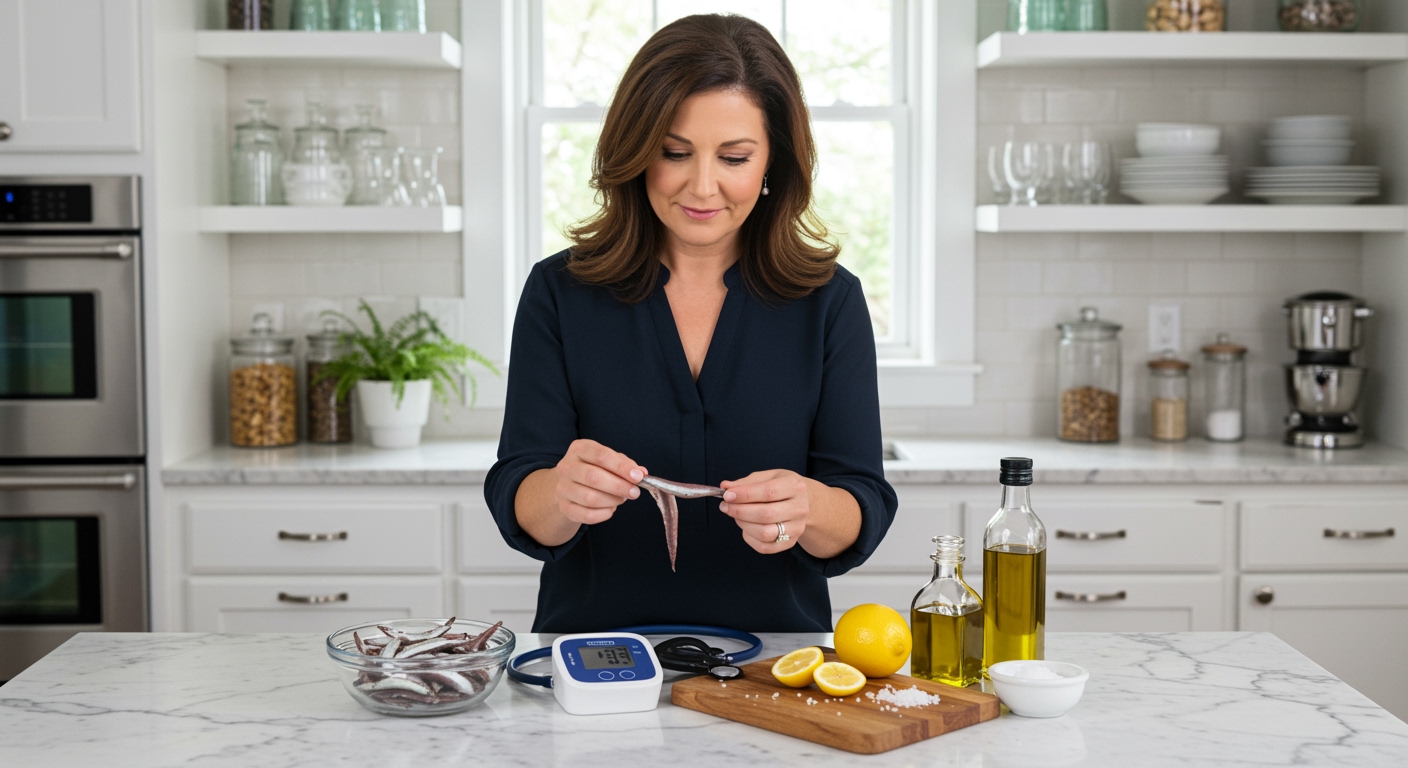✪ Key Takeaway: Hypotension patients can eat more salt, but only under medical supervision and with proper timing.
Introduction
Your doctor just told you to eat more salt for your low blood pressure, and now you feel completely confused.
You might be asking this question because everything you have heard about salt suggests it raises blood pressure, yet here you are being told the opposite.
Hi, I am Abdur, your nutrition coach and today I am going to explain exactly when salt helps hypotension and when it makes things worse.
Why Do Doctors Recommend Salt For Low Blood Pressure?
Salt works for hypotension because it directly affects your blood volume and vascular system.
When you consume sodium, your kidneys retain more water to maintain the proper sodium-to-water ratio in your bloodstream.
This increased water retention leads to higher blood volume, which naturally raises your blood pressure readings.
Your blood vessels also respond to sodium by becoming slightly more constricted, which further increases pressure within your circulatory system.
Research shows that people with hypotension often have lower baseline sodium levels or reduced sensitivity to normal sodium intake.
This means their bodies may not retain enough fluid to maintain adequate blood pressure for proper organ function.
✪ Fact: Your kidneys can retain up to 1.5 liters of extra fluid when sodium intake increases significantly.
What Types Of Salty Foods Actually Help?
Not all salty foods provide the same therapeutic benefit for hypotension patients.
Natural sources like sea salt, rock salt, and foods with naturally occurring sodium work more effectively than processed options.
Broths, soups, pickled vegetables, and olives provide sodium along with other electrolytes that support blood pressure regulation.
Processed foods like chips, crackers, and fast food contain sodium but also include additives that can interfere with your body’s natural fluid balance.
The timing of salt consumption matters significantly for hypotension management.
Consuming salt with meals helps your body absorb and utilize the sodium more efficiently than eating it alone.
Drinking water with your salty foods ensures your kidneys have enough fluid to work with when adjusting blood volume.
✪ Pro Tip: Add a pinch of sea salt to your morning water to help prevent orthostatic hypotension episodes.
When Does Extra Salt Backfire For Hypotension?
Excessive salt intake can actually worsen certain types of low blood pressure conditions.
People with kidney problems may not process extra sodium properly, leading to dangerous fluid retention without blood pressure improvement.
Heart failure patients with hypotension face particular risks because their hearts cannot handle the increased blood volume that salt creates.
Some medications interact poorly with high sodium intake, potentially causing electrolyte imbalances that make hypotension worse.
Dehydration-related hypotension requires fluid replacement first, and adding salt without adequate water can actually delay recovery.
Age also plays a crucial role in how your body responds to increased sodium intake.
Older adults may develop paradoxical responses where too much salt leads to further blood pressure drops rather than increases.
✪ Note: Never increase salt intake without consulting your doctor if you take blood pressure medications.
How Much Salt Should Hypotension Patients Actually Eat?
The optimal salt intake for hypotension varies significantly based on your individual condition and underlying health factors.
Most doctors recommend starting with 2-3 grams of sodium per day, which equals about one teaspoon of regular table salt.
This amount should be spread throughout the day rather than consumed all at once to maintain steady blood volume levels.
Monitor your blood pressure readings closely when increasing salt intake to ensure you achieve the desired therapeutic effect.
Some patients may need up to 6 grams of sodium daily, but this level requires careful medical supervision.
Track your symptoms alongside your salt intake to identify the sweet spot where your hypotension improves without causing side effects.
Remember that your sodium needs may change based on weather, activity level, and other medications you take.
✪ Fact: One teaspoon of salt contains approximately 2,300 milligrams of sodium.
What Other Strategies Work Better Than Just Adding Salt?
Salt alone rarely provides complete hypotension management without additional lifestyle modifications.
Increasing your overall fluid intake to 8-10 glasses of water daily helps maximize the blood pressure benefits of added sodium.
Compression stockings work synergistically with salt by preventing blood from pooling in your lower extremities.
Small, frequent meals prevent the blood pressure drops that often occur after eating large portions, especially when combined with appropriate sodium intake.
Regular exercise helps your cardiovascular system adapt to blood pressure changes more effectively.
Avoiding alcohol and limiting caffeine can prevent the dehydrating effects that counteract your salt therapy efforts.
Standing up slowly and avoiding hot environments help prevent sudden blood pressure drops regardless of your sodium intake level.
✪ Pro Tip: Combine salt therapy with compression stockings for maximum orthostatic hypotension relief.
The Bottom Line
Hypotension patients can benefit from increased salt intake, but this approach requires careful medical guidance and individualized dosing.
Salt is a tool, not a cure, and like any tool, it works best when used correctly and at the right time.
I would love to hear about your experiences with salt therapy for low blood pressure, so please share your questions or thoughts in the comments below.
References
At NutritionCrown, we use quality and credible sources to ensure our content is accurate and trustworthy. Below are the sources referenced in creating this article:
- Hackensack Meridian Health: Can Salt Help Improve Low Blood Pressure
- PMC: Dietary Salt Intake and Hypertension
- Business Insider: How to Raise Low Blood Pressure
- Healthline: 6 Dangers of Sodium Restriction





